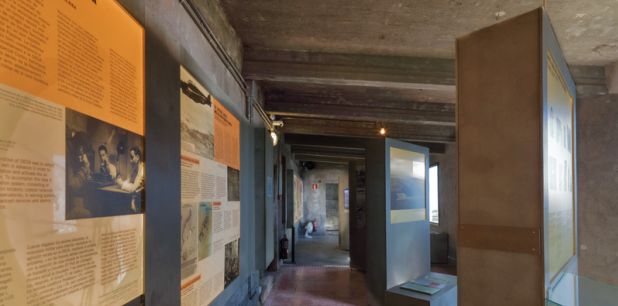MUHBA Turó de la Rovira



MUHBA Oliva Artés, MUHBA Park Güell and MUHBA Turó de la Rovira are closed today 8th December due to wind and to ensure people's safety.
Sorry for any inconvenience
In March 2011, the new Turó de la Rovira heritage space was officially opened, following a restoration and heritage project in a city space that had, until then, been relatively degraded, isolated, and ignored. It contained the remains of an anti-aircraft battery that helped to defend Barcelona from air attacks during the Civil War, as well as traces of the Canons shantytown district, which survived until 1990, and which formed part of the informal city of huts and shacks that was home to 7% of Barcelona’s population until the late 1950s.
The hill known as the Turó de la Rovira offers a 360º view of the city, and represents a perfect vantage point from which to look out over all the development and progress that took place on the plain of Barcelona. Originally an abandoned Iberian settlement, the drive to create modern Barcelona transformed the landscape around the Turó into agricultural land for growing carob and almond trees and vineyards. Later on, it became the location for summerhouses and small houses with gardens while, in some parts of the area, building materials were extracted (such as at the quarry at Can Baró). City services infrastructures were also built here, such as the Barcelona water company reservoir and the telecommunications aerials that can still be seen today.
The Museum's aim has been to highlight all these historical and heritage elements for visitors. It has created an in situ installation with five information panels, published two urban history guides (Defensa/BCN, 1936-1939 and Barraques/BCN,) and has also been organising guided tours to the site. In addition, the Museum has promoted a methodological reflection that has produced a heritage-based intervention using archaeological criteria especially designed for conserving fragile, modern structures.
The work that has been carried out (soon to be continued with the restoration of the northern side of the Turó and the preparation of interior spaces for display) has been rewarded by large numbers of visitors coming to see this unique city space. In 2012, the site was ex aequo winner of the European Prize for Urban Public Space.
MUHBA Turó de la Rovira. The Civil War and Postwar Period
The archaeological works have shown an unusual aspect of the hill, with the recovery of the Officials’ Pavilion, the Troops’ Pavilion and the Battery Command site.
The exhibition “Barcelona to the Limit” shows the city under the bombs and the postwar informal city, where slums were the only option for many people. All of this encompasses the impact of the aerial war and shows how the city’s growth accelerated from the beginning to the mid-20th century.
List of points shown on the map
Adreça
Marià Labèrnia s/n
08032 Barcelona
Tel. 93 256 21 22
Fax. 93 268 04 54
museuhistoria@bcn.cat
journey planner
Horari de visita
October to May
Wednesday: 10.00 to 14.00
Saturday and Sunday: 10.00 to 15.00
June, July, August and September
Wednesday, Friday, Saturday and Sunday:
16.00 to 19.00
Closed on: January 1rst, May 1rst, June 24th and December 25th
Informació i reserves
Ticket reservations and activities
barcelona.cat/museuhistoria
Information
informaciomuhba@bcn.cat
For further information: 93 256 21 22
(from Monday to Friday, excluding public holidays) from 10:00 to 14:00
and from 16:00 to 19:00).
barcelona.cat/museuhistoria
https://www.facebook.com/museuhistoriabarcelona
twitter.com/bcncultura
Preu
Free entrance
For guided groups for the general public see prices here
Accessos
Bus: 22


